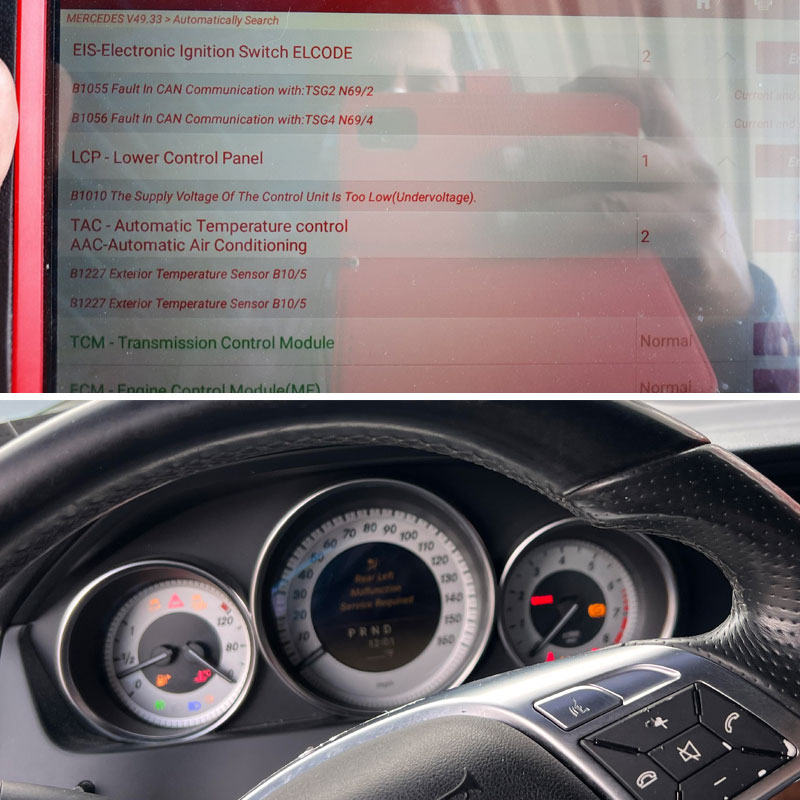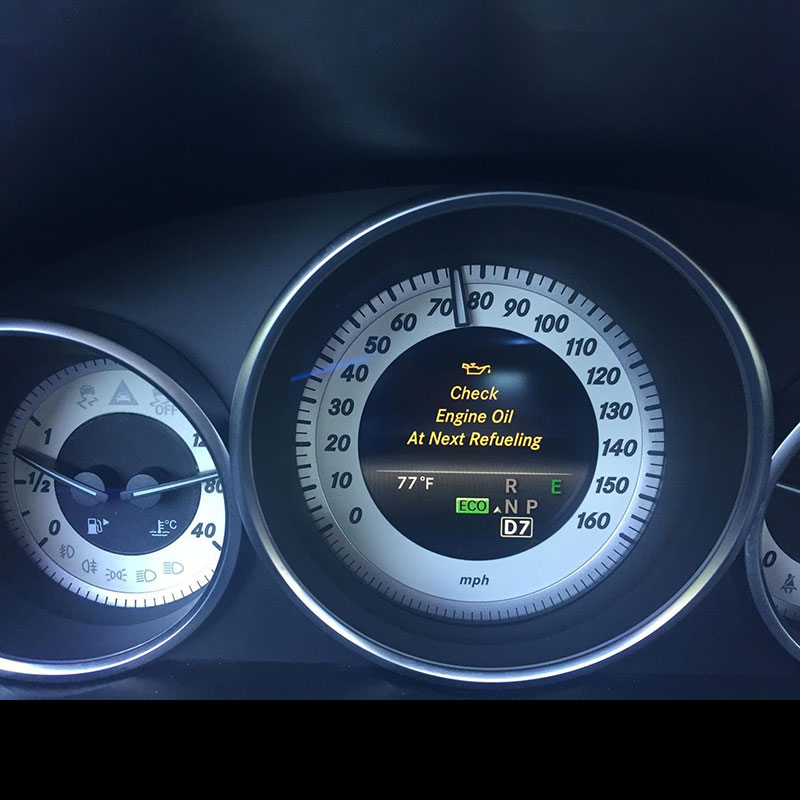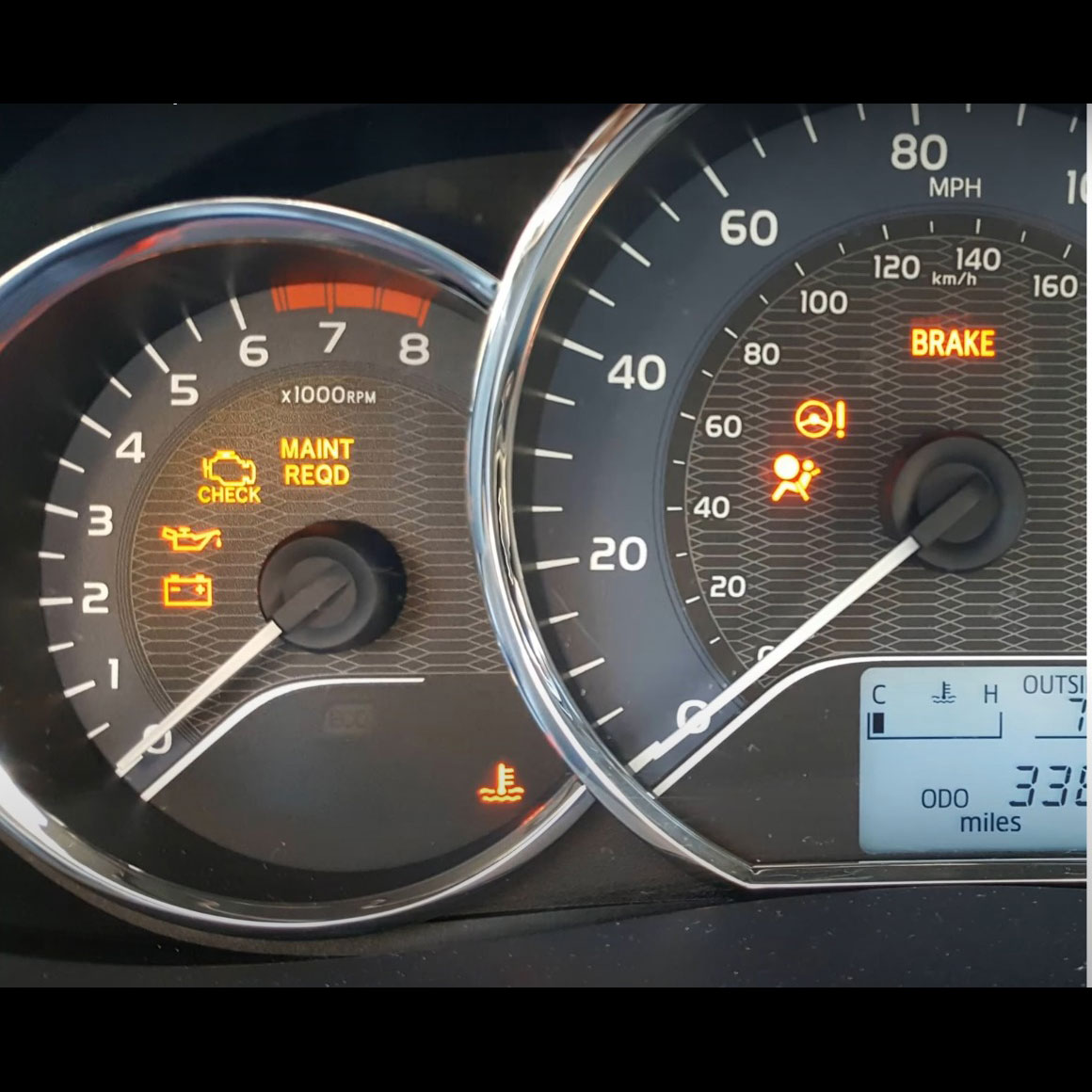Contents
- 1. Understanding the Mercedes-Benz B1010 Fault Code
- 1.1 Multiple Meanings of Mercedes-Benz DTC B1010
- 1.2 Which Systems Might Be Affected?
- 2. Common Symptoms of the B1010 Fault Code
- 2.1 Electrical System Symptoms: When the Current Falters
- 2.2 Ignition and Security System Symptoms (Especially R230 Models): When Starting Gets Tricky
- 3. Potential Causes of the B1010 Fault Code
- 3.1 Power Supply Issues: The Heart of the Matter
- 3.2 Component-Specific Problems
- 3.3 External Factors
- 4. Diagnostic Procedure for Mercedes Benz DTC B1010
- 4.1 Initial Assessment: Gathering Clues
- 4.2 Physical Inspection: Eyes and Hands On
- 4.3 Advanced Diagnostics (If Necessary)
- 5. Repair Solutions for Mercedes B1010 Fault Code
- 5.1 Battery and Electrical System Repairs: Revitalizing the Power Source
- 5.2 Component-Specific Repairs: Addressing Individual Faults
- 5.3 Wiring Repairs: Mending the Electrical Pathways
- 6. Special Considerations for Different Mercedes Models
- 6.1 Sprinter Models: A Note on the Instrument Cluster
- 6.2 R230 SL-Class Models: Focus on the Ignition System
- 6.3 W210 E-Class and Earlier Models: General Undervoltage Concerns
- 7. Prevention Tips for B1010 and Electrical Health
- Conclusion
- Need Help Diagnosing or Fixing B1010? Contact AutoExplain!
The B1010 Mercedes fault code indicates a control unit voltage issue, typically an undervoltage condition affecting various electronic control modules. This guide explains the multiple meanings of B1010 across different Mercedes models, common symptoms, diagnostic procedures, and effective repair solutions.
1. Understanding the Mercedes-Benz B1010 Fault Code
The B1010 Mercedes fault code, a frequent visitor in the diagnostic logs of various Mercedes-Benz models, primarily signals an issue related to the voltage supply of one or more electronic control units. However, the precise meaning of this diagnostic trouble code can exhibit delightful variations depending on the specific model of your Mercedes-Benz and the particular system being monitored. This section will joyfully unpack the diverse interpretations of the B1010 error code, shedding light on the common thread that binds them: an electrical voltage anomaly impacting crucial control modules within your vehicle’s sophisticated network.
1.1 Multiple Meanings of Mercedes-Benz DTC B1010
The B1010 diagnostic trouble code isn’t a one-size-fits-all label. Its interpretation subtly shifts based on the specific Mercedes-Benz model and the electronic control unit that flags the error. Let’s explore some of the most common interpretations:
-
Control Unit Power Supply Undervoltage: This is the most prevalent and widely recognized interpretation of the B1010 fault. It indicates that a particular electronic control module is receiving insufficient voltage to operate correctly. Think of it like a computer not getting enough power to run smoothly.
-
Ambient Air Temperature Sensor Circuit Low: In some instances, the B1010 code can point towards a problem within the circuit of the ambient air temperature sensor. This sensor plays a vital role in various vehicle systems, including climate control and engine management.
-
MICU Lost Communication with Door Multiplex Control Unit (Panic Message): This interpretation, while less frequent, suggests a communication breakdown between the Main Integrated Control Unit (MICU) and a door multiplex control unit. This can sometimes trigger a “panic message” within the vehicle’s systems.
-
Restraint Systems Control Unit (N2/7): Undervoltage at Terminal 15R/15: Particularly common in the elegant R230 series Mercedes-Benz SL-Class models, this interpretation directly points to an undervoltage issue at specific power terminals (15R and 15) of the restraint systems control unit, which manages crucial safety features like airbags.
-
Lower Control Panel (N72/LCP) Undervoltage: In certain models, the B1010 code can indicate that the lower control panel, often responsible for controlling various interior functions, is experiencing an insufficient voltage supply.
This fascinating variability underscores the paramount importance of a precise diagnosis when encountering the B1010 fault code. Utilizing a Mercedes-Benz specific diagnostic scanner is key to unraveling the exact meaning in your vehicle’s context.
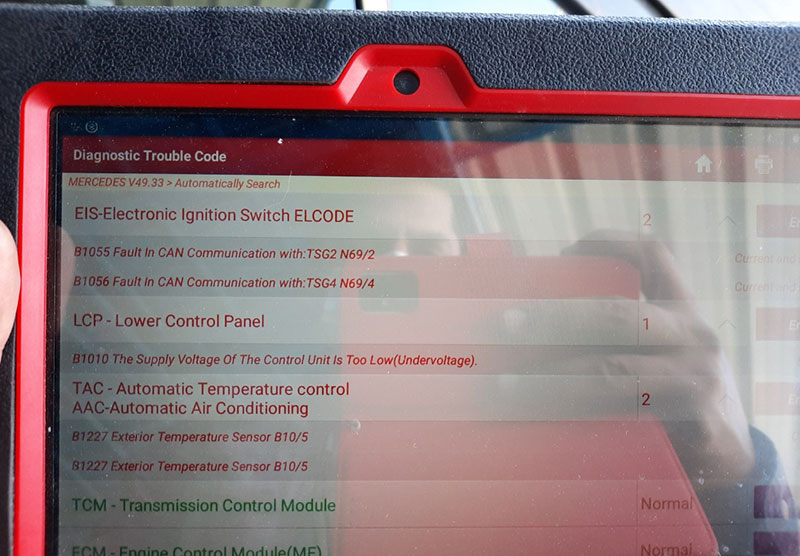
1.2 Which Systems Might Be Affected?
Given the diverse interpretations, the B1010 fault code can manifest its presence across a delightful array of electronic control units within your Mercedes-Benz. Here are some of the systems that might be impacted:
-
Door Control Modules: Responsible for the smooth operation of your vehicle’s doors, including windows, locking mechanisms, and mirrors.
-
Restraint/Airbag Systems: Critical safety systems designed to protect occupants in the event of a collision.
-
Instrument Cluster (IC): The driver’s information hub, displaying vital data such as speed, fuel level, and warning lights.
-
Lower Control Panels: Often governing interior convenience features like lighting and certain switch functions.
-
General Body Control Modules: Overseeing a wide range of electrical functions throughout the vehicle’s body.
The appearance of the B1010 error code in any of these systems warrants prompt and careful attention to ensure the continued safe and enjoyable operation of your Mercedes-Benz.
2. Common Symptoms of the B1010 Fault Code
When your Mercedes-Benz decides to communicate a B1010 fault code, it often does so through a variety of telltale signs. The specific symptoms you observe will depend on which of the vehicle’s systems is grappling with the undervoltage condition. Being aware of these potential indicators can help you recognize a potential issue early and seek timely assistance.
2.1 Electrical System Symptoms: When the Current Falters
An undervoltage situation can lead to a range of noticeable electrical glitches:
-
Warning Lights on the Dashboard: The illumination of warning lights, such as the SRS (Supplemental Restraint System), ESP (Electronic Stability Program), or the general check engine light, can be an early indicator of a B1010 fault. These lights signal that a system is experiencing a problem that requires attention.
-
Inoperative Electric Windows: You might find that your electric windows, particularly those controlled from the driver’s side, become unresponsive or operate erratically. This can be a frustrating inconvenience and a sign of a potential door control module issue.
-
Intermittent Electrical Functions: Other electrical components might start behaving unpredictably, working sometimes and failing at other times. This could include interior lights flickering, the radio cutting out, or other minor electrical annoyances.
-
Non-Functioning Central Locking System: The convenience of central locking might be compromised, with the system failing to lock or unlock all doors simultaneously. This can raise security concerns and point towards a broader electrical system problem.
-
Issues with Power Accessories After Body Repairs: If you’ve recently had bodywork done on your Mercedes-Benz, and subsequently notice electrical problems with power accessories, it’s possible that the B1010 code is related to disturbed or improperly reconnected electrical connections.
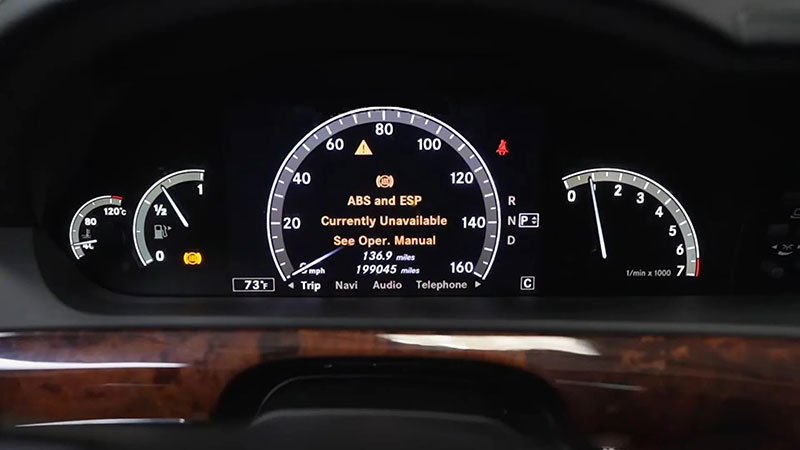
2.2 Ignition and Security System Symptoms (Especially R230 Models): When Starting Gets Tricky
For owners of the stylish R230 series Mercedes-Benz SL-Class, the B1010 fault code, particularly when associated with the EIS/EZS (Electronic Ignition Switch/Electronic Steering Lock) system, can present some unique and concerning symptoms:
-
Key Won’t Turn in Ignition When Cold: A particularly unsettling symptom is when the ignition key refuses to turn when the car is cold, only becoming operational after the interior warms up. This strongly suggests a potential issue with the EIS/EZS system.
-
No Dash Lights, Electric Windows, or Indicators After Start: Even if the engine does manage to start, you might find that the dashboard lights remain off, the electric windows are inoperative, and the turn indicators fail to function. This indicates a significant electrical system malfunction.
-
Folding Roof Operational Issues: For the convertible R230 models, problems with the operation of the retractable hardtop can also be linked to a B1010 fault affecting the electrical system that controls the roof mechanism.
-
Central Locking Not Working from Remote Key: Similar to the general electrical system symptoms, the central locking system might fail to respond to commands from the remote key fob.
Experiencing any of these symptoms should prompt you to investigate the potential for a B1010 fault code and take appropriate diagnostic and repair steps. Ignoring these signs could lead to further complications and potentially compromise the safety and functionality of your Mercedes-Benz.
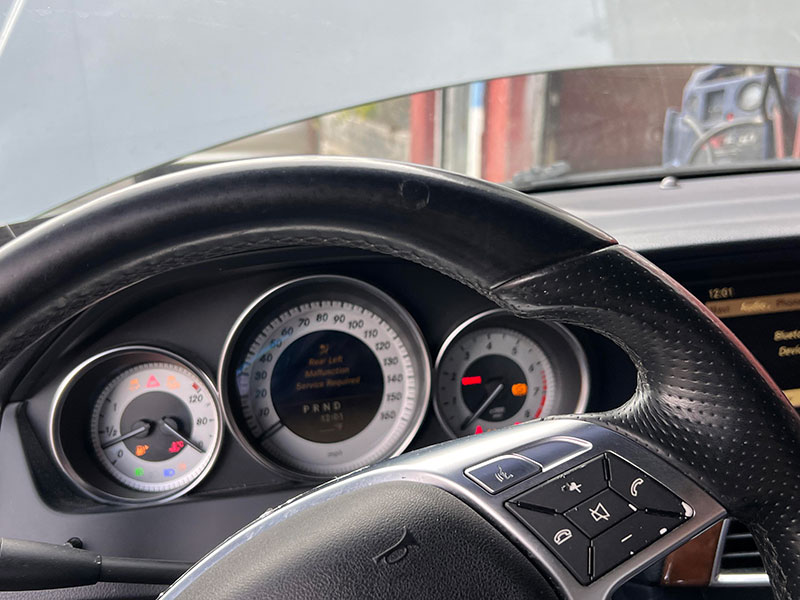
3. Potential Causes of the B1010 Fault Code
Pinpointing the precise cause of a B1010 Mercedes fault code can feel like detective work, but understanding the common culprits can significantly streamline the diagnostic process. The underlying theme, as we’ve established, is an electrical voltage issue affecting one or more control modules. Let’s joyfully explore the potential reasons behind this electrical hiccup.
3.1 Power Supply Issues: The Heart of the Matter
The most frequent contributors to a B1010 code often involve problems with the vehicle’s power supply system:
-
Weak or Failing Battery: The battery is the lifeblood of your car’s electrical system. A battery that is weak, old, or failing may not be able to provide a consistent and sufficient voltage supply to all the electronic control units, leading to undervoltage conditions and triggering the B1010 fault. Regular battery checks are crucial.
-
Poor Ground Connections: Proper grounding is essential for the correct flow of electricity in any automotive system. Corroded, loose, or damaged ground connections can impede the flow of current, causing voltage drops at various control modules. These seemingly small connections play a vital role.
-
Damaged Wiring Harnesses: The intricate network of wiring harnesses acts as the nervous system of your Mercedes-Benz, carrying electrical power and signals throughout the vehicle. Damage to these harnesses, whether from physical wear, accidents, or animal interference, can disrupt the voltage supply to control units.
-
Corroded Electrical Connections: Over time, electrical connectors can become corroded due to exposure to moisture and environmental factors. This corrosion increases resistance in the circuit, leading to voltage drops and potential B1010 errors.
-
Voltage Drops in the Electrical System: Even without obvious damage, various factors can contribute to general voltage drops within the vehicle’s electrical system. This could be due to high current draw from multiple components simultaneously or internal resistance within older wiring.
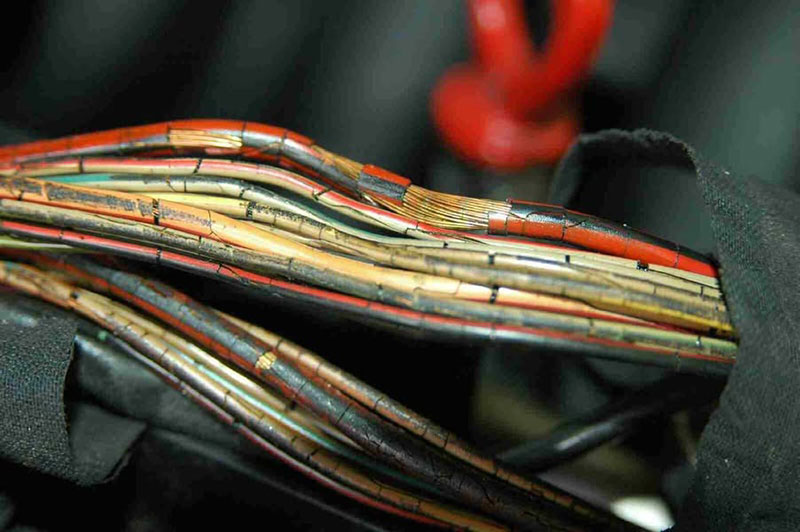
3.2 Component-Specific Problems
In some cases, the B1010 fault code can be a symptom of a failing individual component:
-
Defective Door Control Modules: If the B1010 code is specifically linked to door functions, a faulty door control module itself might be the cause of the undervoltage issue. These modules can fail due to internal electrical problems or water damage.
-
Failing EIS/EZS Ignition Switch System (Particularly in R230 Models): As highlighted earlier, the ignition switch system in R230 SL-Class models is a known potential source of B1010 codes related to the restraint system. Internal failures within this complex unit can lead to undervoltage at specific terminals.
-
SRS/Airbag Control Unit Issues: While less common as a direct cause of a power supply issue reported as B1010, a failing SRS control unit might trigger this code due to internal malfunctions affecting its power management.
-
Lower Control Panel Failures: If the B1010 code points specifically to the lower control panel, a fault within the panel itself could be drawing excessive current or experiencing an internal power supply problem.
3.3 External Factors
Sometimes, external events can inadvertently lead to a B1010 fault code:
-
Recent Repairs That May Have Disturbed Electrical Connections: As mentioned with the symptoms, recent bodywork or other repairs might have inadvertently loosened or damaged electrical connections, leading to voltage drops. It’s always wise to double-check connections after any such work.
-
Liquid Spills Affecting Control Modules or Connections: Accidental liquid spills can wreak havoc on sensitive electronic components and electrical connectors, potentially causing short circuits, corrosion, and ultimately, undervoltage conditions.
-
Rodent Damage to Wiring Harnesses: Unpleasant as it may be to consider, rodents can sometimes find their way into vehicle wiring harnesses and gnaw on the insulation, leading to shorts, open circuits, and voltage supply problems.
By thoughtfully considering these potential causes, you can begin to form a clearer picture of what might be triggering the B1010 fault code in your Mercedes-Benz and guide your diagnostic efforts more effectively.
4. Diagnostic Procedure for Mercedes Benz DTC B1010
Diagnosing a B1010 Mercedes fault code effectively requires a systematic and logical approach. Rushing to conclusions can lead to unnecessary repairs and wasted time. This section will outline a cheerful step-by-step procedure to help you pinpoint the root cause of this electrical enigma.
4.1 Initial Assessment: Gathering Clues
Before diving into complex procedures, start with some fundamental checks:
-
Check Battery Condition: Begin by assessing the health of your Mercedes-Benz battery. Use a multimeter to verify that the battery voltage is at least 12.4 volts with the engine off. A voltage significantly lower than this indicates a potential battery issue. Also, visually inspect the battery terminals for corrosion and ensure they are clean and tightly connected. A weak battery is a very common trigger for the B1010 code.
-
Scan for Additional Codes: Employ a Mercedes-Benz specific diagnostic scanner to retrieve the B1010 fault code. Critically, also note any other accompanying fault codes that may be present. These additional codes can provide valuable context and help you narrow down the affected system or component. Write down all the codes and their descriptions.
-
Verify the Specific System Affected: Your diagnostic scanner should ideally indicate which specific control unit is reporting the undervoltage condition (e.g., door control module, SRS control unit, instrument cluster). This is a crucial piece of information that will guide your subsequent diagnostic steps.
4.2 Physical Inspection: Eyes and Hands On
A thorough physical inspection can often reveal obvious problems:
-
Inspect Electrical Connections: Carefully examine all accessible electrical connectors related to the system identified by the diagnostic scanner. Look for any signs of damage, looseness, or corrosion. Pay particular attention to connections that might have been disturbed during recent repairs. Gently wiggle connectors to see if they are secure.
-
Examine the Wiring Harnesses: Visually inspect the wiring harnesses associated with the affected system. Look for any signs of physical damage such as cuts, abrasions, or melting. Pay close attention to areas where wiring might be routed near moving parts or sharp edges. Also, check for any evidence of rodent activity.
-
Check Ground Points: Locate all relevant ground points for the control unit reporting the B1010 code. These are typically points where wires are bolted to the vehicle’s chassis. Inspect these connections for corrosion or looseness. Ensure the ground wires are securely attached and free from any paint or rust that could impede a good electrical connection.
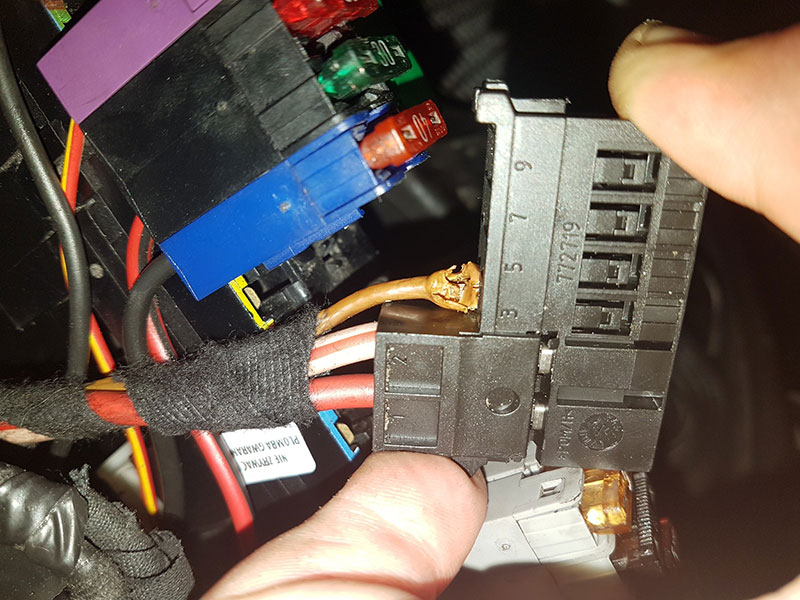
4.3 Advanced Diagnostics (If Necessary)
If the initial assessment and physical inspection don’t reveal the culprit, more advanced diagnostic techniques might be required:
-
Voltage Drop Testing: Using a multimeter, you can perform voltage drop tests across various points in the electrical circuit to identify areas of excessive resistance. This can help pinpoint corroded connections or damaged wires that are causing a voltage drop to the affected control unit. Refer to your Mercedes-Benz service manual for specific testing procedures and acceptable voltage drop values.
-
Continuity Testing: With the power off, use a multimeter to perform continuity tests on individual wires within the wiring harness. This will confirm whether a wire is intact and providing a complete electrical path. Open circuits can be identified using this method.
-
Component Testing: In some cases, it might be necessary to test the functionality of the specific control unit suspected of causing the issue. This often requires specialized tools and knowledge and might be best left to a qualified Mercedes-Benz technician.
-
Consulting Wiring Diagrams: Accessing the specific wiring diagrams for your Mercedes-Benz model is invaluable for tracing circuits and identifying the correct test points. These diagrams provide a detailed map of the electrical system.
Important Note: Always disconnect the negative battery terminal before performing any electrical testing or repairs to prevent accidental short circuits and potential damage to your vehicle’s electrical system. If you are not comfortable with electrical diagnostics, it is always best to seek the assistance of a qualified automotive technician.
By following these diagnostic steps in a careful and methodical manner, you will significantly increase your chances of accurately identifying the underlying cause of the B1010 Mercedes fault code and implementing the appropriate repair solution.
5. Repair Solutions for Mercedes B1010 Fault Code
Once you’ve diligently diagnosed the root cause of the B1010 Mercedes fault code, it’s time to implement the necessary repairs to restore the electrical harmony of your vehicle. The specific repair will, of course, depend on the identified problem. Here’s a cheerful guide to common repair solutions.
5.1 Battery and Electrical System Repairs: Revitalizing the Power Source
If the diagnosis points to issues with the main power supply, these steps might be necessary:
-
Battery Service:
-
Test and Replace the Battery if Necessary: If your battery fails a load test or is showing signs of age and weakness, replacing it with a new, high-quality battery that meets the specifications for your Mercedes-Benz is a crucial first step.
-
Clean Battery Terminals and Ensure Proper Connection: Thoroughly clean any corrosion from the battery terminals using a wire brush and a solution of baking soda and water. Ensure the battery cables are securely tightened to the terminals.
-
Check the Charging System for Proper Operation: After replacing the battery, it’s wise to have the vehicle’s charging system (alternator and voltage regulator) tested to ensure it is functioning correctly and properly charging the new battery.
-
-
Ground Connection Restoration:
-
Locate and Clean All Ground Points for the Affected System: Identify the ground points relevant to the control unit that triggered the B1010 code. Clean these points thoroughly using a wire brush to remove any rust or corrosion.
-
Ensure Proper Connection with No Corrosion or Looseness: Retighten the ground connections securely. If a ground wire or terminal is heavily corroded, it might need to be replaced.
-
Apply Dielectric Grease to Prevent Future Corrosion: Applying a thin layer of dielectric grease to cleaned ground connections and battery terminals can help prevent future corrosion and maintain good electrical contact.
-
5.2 Component-Specific Repairs: Addressing Individual Faults
If a specific component is identified as the source of the problem:
-
Door Control Module Issues:
-
Inspect the Affected Door Module: If the B1010 code relates to door functions, carefully inspect the specific door module for any signs of physical damage, such as cracks or water infiltration.
-
Check for Water Infiltration or Damage: Water damage is a common cause of door module failure. Look for any evidence of moisture inside the module or corrosion on its connectors.
-
Replace or Repair the Door Module as Necessary: Depending on the extent of the damage, the door control module might need to be repaired or, more likely, replaced with a new or remanufactured unit.
-
-
R230 EIS/EZS Ignition Switch Repair (if applicable):
-
For SL-Class Models Experiencing B1010 N2/7 Codes: If the B1010 code is specifically related to the restraint system undervoltage in an R230 model, the EIS/EZS ignition switch is a prime suspect.
-
Consider Specialized Repair Service for the Ignition Switch: Repairing these complex ignition systems often requires specialized knowledge and equipment. Consulting a Mercedes-Benz specialist or a reputable auto electronics repair service is usually recommended.
-
Common Repair Cost is Approximately $475 According to Repair Services: While this is an estimate and can vary, it gives you a general idea of the potential cost involved in EIS/EZS repair. (Source: Based on the provided data).
-
-
Lower Control Panel Repairs:
-
Inspect the Lower Control Panel for Damage: If the code indicates N72/LCP undervoltage, visually inspect the lower control panel for any signs of physical damage or liquid intrusion.
-
Test Voltage Supply to the Panel: A technician can use a multimeter to check if the panel is receiving the correct voltage.
-
Replace if Necessary: If the lower control panel is found to be faulty, it will likely need to be replaced with a new unit.
-
5.3 Wiring Repairs: Mending the Electrical Pathways
If damaged wiring is the culprit:
-
Repair Damaged Wiring:
-
Trace the Entire Wiring Harness for the Affected System: Carefully trace the wiring harness associated with the control unit reporting the B1010 code to locate the area of damage.
-
Repair or Replace Damaged Sections Using Appropriate Gauge Wire: Damaged sections of wire should be carefully repaired using proper soldering techniques and heat-shrink tubing for insulation, or completely replaced with wire of the same gauge and type.
-
Properly Insulate All Connections: Ensure all repaired or new connections are properly insulated to prevent short circuits and corrosion.
-
-
Check Fuses and Relays:
-
Inspect and Replace Any Blown Fuses: Check the fuses associated with the affected system. A blown fuse is a sign of an overcurrent condition that needs to be addressed. Simply replacing the fuse without finding the underlying cause might lead to it blowing again.
-
Test Relays Associated with the Affected Systems: Relays are electrical switches that control the flow of power to various components. A faulty relay can cause an intermittent or complete loss of power. Relays can be tested using a multimeter or by swapping with a known good relay of the same type.
-
After completing any repairs, it’s essential to clear the B1010 fault code using your diagnostic scanner and then monitor the system to ensure the code does not return. A thorough test drive to check the functionality of all affected components is also highly recommended.
6. Special Considerations for Different Mercedes Models
The B1010 fault code, while sharing a common theme, can have nuances specific to different Mercedes-Benz models. Understanding these model-specific considerations can be incredibly helpful in the diagnostic and repair process.
6.1 Sprinter Models: A Note on the Instrument Cluster
For owners and mechanics working on Mercedes-Benz Sprinter vans, it’s worth noting that the B1010 code appearing in the Instrument Cluster (IC) is often observed as a common low voltage code. Interestingly, the provided data suggests that this particular occurrence might be ignorable if it doesn’t reappear after being cleared with a diagnostic scanner. (Source: Based on the provided data). However, it’s crucial to emphasize that even if the code doesn’t immediately return, a proper diagnosis is still a prudent step to ensure there are no underlying electrical issues that could potentially cause problems down the line. Ignoring a persistent electrical code is generally not advisable.
6.2 R230 SL-Class Models: Focus on the Ignition System
As previously highlighted, the elegant R230 series Mercedes-Benz SL-Class has a notable association between the B1010 fault code and the Electronic Ignition Switch/Electronic Steering Lock (EIS/EZS) system. When encountering a B1010 code in these models, particularly if accompanied by symptoms like a key that won’t turn when cold or a lit SRS light, the EIS/EZS system should be a primary area of investigation. The provided data specifically mentions “Terminal 15 & 15R fault codes stored in front SAM or SRS module” and “SRS light illuminated on dashboard” as indicators linked to this issue in R230 vehicles. (Source: Based on the provided data). Remember that specialized repair for the EIS/EZS unit might be necessary.
6.3 W210 E-Class and Earlier Models: General Undervoltage Concerns
In older Mercedes-Benz models, such as the W210 E-Class and those preceding it, a B1010 fault code is more likely to relate to general control unit undervoltage issues. These issues can be particularly prevalent after events that might impact the electrical system, such as a battery replacement or following body repairs. (Source: Based on the provided data). In these cases, a thorough check of battery connections, ground points, and wiring harnesses is especially important.
By being aware of these model-specific tendencies, technicians and owners can approach the diagnosis of a B1010 fault code with a more focused and efficient strategy, ultimately leading to a quicker and more accurate resolution.
7. Prevention Tips for B1010 and Electrical Health
While dealing with a B1010 fault code is manageable with the right knowledge, preventing its occurrence in the first place is even better. Maintaining a healthy electrical system in your Mercedes-Benz can save you time, money, and potential headaches. Here are some cheerful preventative measures you can take:
-
Maintain Proper Battery Condition:
-
Regularly Test Your Battery, Especially Before Winter: Extreme temperatures can significantly impact battery performance. Have your battery’s health checked regularly, especially before the onset of cold winter months. Most auto parts stores offer free battery testing.
-
Consider a Battery Tender for Vehicles Used Infrequently: If your Mercedes-Benz is not driven regularly, using a battery tender can help maintain the optimal charge level and prolong the life of the battery.
-
Replace Aging Batteries Before They Cause Electrical System Issues: Be mindful of your battery’s age (typically 3-5 years). Replacing an aging battery proactively can prevent unexpected failures and potential electrical problems.
-
-
Ensure Proper Ground Connections:
-
Periodically Clean and Tighten Ground Connections: As part of your routine maintenance, or whenever you are working on electrical components, take the opportunity to inspect and clean accessible ground connections. Ensure they are securely tightened.
-
Apply Corrosion Inhibitor to Battery Terminals and Ground Points: Applying a corrosion inhibitor spray or dielectric grease to battery terminals and ground connections can help prevent the formation of rust and corrosion, maintaining good electrical conductivity.
-
-
Use Caution During Repairs:
-
If Having Body Work Done, Ensure Electrical Connections Are Properly Restored: If your vehicle undergoes any body repairs, specifically ask the repair shop to ensure that all electrical connections that may have been disconnected or disturbed are correctly and securely reconnected.
-
Protect Interior Electronics from Liquid Spills: Be cautious when handling liquids inside your vehicle to avoid accidental spills that could damage sensitive electronic control modules or electrical connections. If a spill occurs, clean it up immediately and thoroughly.
-
-
Regular Electrical System Inspection:
-
Have the Charging System Tested During Routine Maintenance: Include a check of your vehicle’s charging system (alternator output and voltage regulation) as part of your regular maintenance schedule. This can help identify potential issues before they lead to problems.
-
Address Any Intermittent Electrical Issues Promptly: If you notice any unusual or intermittent electrical behavior in your vehicle, such as flickering lights or erratic power accessory operation, don’t ignore it. Have it diagnosed and addressed promptly before it escalates into a more significant problem.
-
By incorporating these preventative measures into your Mercedes-Benz ownership routine, you can significantly reduce the likelihood of encountering a B1010 fault code and enjoy a more reliable and worry-free driving experience. A little proactive care goes a long way in maintaining the electrical health of your cherished vehicle.
Conclusion
The B1010 fault code in Mercedes-Benz vehicles primarily indicates an undervoltage condition affecting various control units. While the specific meaning varies slightly between different models and systems, the root causes typically involve battery issues, poor connections, damaged wiring, or faulty control modules.
By following a systematic diagnostic approach and addressing the underlying electrical issues, most B1010 codes can be resolved successfully. Proper maintenance of your vehicle’s electrical system, particularly the battery and ground connections, is the best preventative measure against future occurrences.
Need Help Diagnosing or Fixing B1010? Contact AutoExplain!
At AutoExplain, we specialize in car diagnostics, coding, and programming support for Mercedes-Benz vehicles. If you’re experiencing the B1010 Mercedes fault code or any other electrical issues, our experts are ready to help you troubleshoot and repair your vehicle efficiently.
📞 Contact us now via WhatsApp: +84967469410
🌐 Visit our website: AutoExplain
Don’t let an electrical fault keep your Mercedes off the road—reach out today and get expert assistance!

